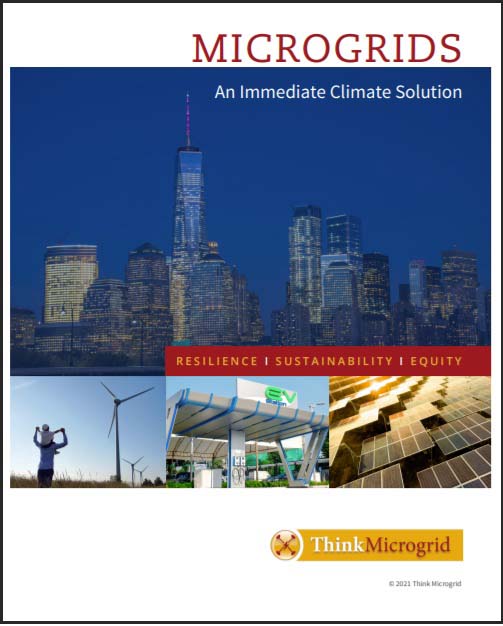A new report by Guidehouse Insights has created a compelling case for investing in microgrids, based not only on climate resilience factors but also on economic resilience. “The Renewable Energy Economic Benefits of Microgrids” — a study commissioned by the Civil Society Institute (CSI), the Rocky Mountain Institute (RMI) and the Millennial Action Project (MAP) — spelled out the economic rationale for investing in microgrids and estimated that every $1 (USD) million invested in renewably powered microgrids has the potential to create 3.4 skilled jobs and $500,000 in economic benefits.
Using California and Puerto Rico as case studies — both areas have been heavily impacted by climate-related weather disasters — the report found that California’s investment in renewable microgrids could create over 166,000 jobs by 2030 and generate over $22 billion in gross domestic product. In 2021 so far, California microgrid investments have created 4,670 jobs and $1.76 billion in business sales. In Puerto Rico, microgrid investments also produced positive economic impacts for the island.
According to the report, microgrids’ ability to provide resiliency in the face of extreme weather events and an aging electrical grid has been a critical driver for increasing investments over the past few years. In a panel discussion and news conference with representatives from CSI, RMI and MAP and hosted by microgrid advocacy group Think Microgrid, Roy Torbert, senior principal of RMI, noted the combined economic benefits of microgrids.
“Microgrids will help increase the resiliency of the electric grid by helping communities become more prepared to prevent power outages … but as this report shows, enhancing our resiliency through microgrids will also boost our economy and add jobs,” Torbert said.
The Guidehouse Insights economic impact report on microgrids coincides with the release of a public opinion survey that showed general understanding of and support for microgrids has doubled over the past year. Lake Research Partners and Breglio and Associates found that as of October 2021, the number of adults familiar with the concept of microgrids has doubled to 26% since 2020. Similarly, 79% of adults favor more use of microgrids in 2021 compared to 67% in 2020.
Meanwhile, microgrids have emerged as an important consideration for millennials. During the Think Microgrid discussion, Layla Zaidane, president and CEO of MAP, said “Fewer issues are more pressing than addressing energy supply and resiliency for a more sustainable future … Microgrids have emerged as a key intervention for forward-looking lawmakers to act on now.”
Think Microgrid releases microgrid guide for policymakers
Think Microgrid also issued an educational paper to help policymakers understand how microgrids can help provide critical solutions to climate challenges by mitigating economic impacts for both individual citizens and the economy as a whole. “Microgrids: An Immediate Climate Solution” explains how microgrids will provide beneficial upgrades to our legacy electrical grid by helping to balance the variability of renewable energy and address energy inequality by making distributed clean energy available to disadvantaged communities, which the Department of Energy defines as communities with an annual median household income less than 80% of the annual median income statewide. The paper also discusses the need for regulatory reforms that can facilitate the integration of distributed energy into our current energy infrastructure.
“The infrastructure bill recently signed into law dedicated billions of dollars to bring equitable resiliency to the grid, and these reports make it clear that this will create new jobs,” said Think Microgrid Executive Director Cameron Brooks.
Think Microgrid’s panel discussion news conference, moderated by Elisa Woods of Microgrid Knowledge, showcased the new findings on microgrids and provided research details. Readers can view the discussion here.
Learn More about Software from HOMER Energy by UL
Visit HOMER Energy by UL to learn more about UL’s HOMER® Pro, HOMER® Grid and HOMER® Front software solutions, download complimentary trials, sign up for training and explore our extensive knowledge base and other support documents.


This is actually really exciting news. More state and local governments really need to lean into microgrids as a solution in the tool bag. Great article. Thank You.
Hi Chris,
Thank you so much for your comment. We agree with you on the local governments!
Lili Francklyn